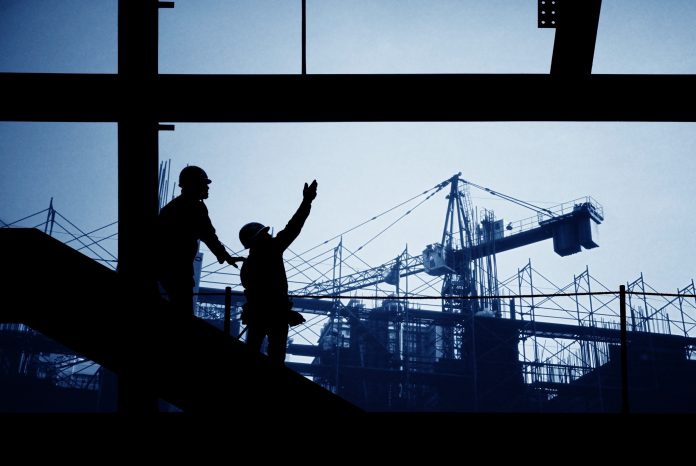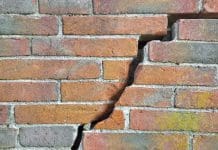The Chartered Institute of Building has been examining the issue of quality in construction for some time. Here, the organisation’s new chief executive, Caroline Gumble, discusses the work of their Construction Quality Commission in pushing the issue to the top of the agenda
The CIOB’s Construction Quality Commission was launched two-and-a-half years ago in response to a report into defects that led to the closure of a number of Edinburgh schools. The work of the commission was given a new impetus following the tragic Grenfell Tower fire in June 2017.
Paul Nash FCIOB, a past president of the CIOB and chairman of our Construction Quality Commission, said recently: “Quality, or rather the failure of quality, is arguably the most important issue facing the construction industry today.”
That two years-plus of research and engagement across the industry identified an underlying cultural issue: quality was being sacrificed to achieve targets.
Yet there is a cost – an actual impact on the bottom line – if you deliver poor quality and poor value. This has a direct correlation to the productivity of the industry and an obvious impact on margins.
The CIOB is now in a position to deliver some of the practical outcomes of the commission’s work and start pushing for the changes that are needed to raise the issue of quality in the built environment and help drive up standards.
But how did we get from the launch of the commission to where we are now? And what do we want to happen next?
Our specific interest in quality followed Professor John Cole’s report into the defects that led to the closure of 17 schools in Edinburgh and, along with other industry bodies, we played our part in addressing this.
Around the same time, declining consumer satisfaction with new homes identified a need to address some serious quality failings in the residential sector.
Just a few months later, in June 2017, the fire at Grenfell Tower in London claimed the lives of 72 people. This is the real cost – the human and social cost. It was a clarion call for fundamental change in the way buildings are designed, procured, constructed and managed. It dawned on us that serious problems were not just isolated events, but instead were systemic.
Our commission of past presidents, set up that same year, investigated the issue of quality in construction and considered what practical steps were needed to address it.
In gathering evidence, we surveyed the industry and the response pointed overwhelmingly to the need for top-to-bottom change. An overwhelming 84% of respondents said that workmanship suffers because of poor management of quality, while 82% said signing off work is compromised by the same.
The evidence proved what we suspected: that time and cost considerations have pushed quality to the back of the queue, and inherent industry systems and culture may be too weak on their own to restore quality as an equal priority.
As part of the commission’s work, we also teamed up with other professional bodies in the sector. In developing practical tools to support the, RIBA, RICS and the CIOB last year launched a free-to-download digital tool – the Quality Tracker – to improve the quality of outcomes in the construction industry.
And we have also now published our Code of Quality Management. The new code, subtitled a Guide to Best Practice Construction Quality Management, is free to download and is intended to provide a single point of information on construction quality management for construction professionals to improve quality by establishing best practice for quality management and quality planning processes.
Quality is an issue for the whole sector and, of course, the industry on a global scale. We believe that what we have pulled together, in our case, reflects the impact of the quality issue and hearing the voices of SMEs, not just the big players, is essential to make a real difference for the whole industry.
We have a once-in-a-lifetime opportunity to make meaningful change to the culture in our industry – how we as an industry implement the outcomes from the Hackitt Review and embed the good work that we and others are doing into the culture of construction is absolutely critical.
I know it won’t be easy. I also know it’s trite to hark back to the good old days, but when I was on site with my father, who was a brickie, I spent plenty of time trundling from one site to another in a builder’s van. There was no visible health and safety in those days! I didn’t even have to wear a seat belt in the van; how times have changed for the better.
It’s now the right moment to change things for the better again. I’ve only been at the CIOB a couple of months now but in my meetings with industry representatives there is a real positivity and belief that we can do better on quality.
I’m also pleased to announce that the CIOB Academy have now launched a free MOOC – massive open online course – on Quality in Construction. The three-week interactive course, opening on 21 October 2019, has been designed specifically for those working in the industry and for clients and end users who want to learn more about what can be done to achieve quality buildings.
So I’m using this opportunity to reissue a call to action I made in my first couple of weeks at the CIOB: please join the cause and support the work of our Construction Quality Commission. Download our new – and free – Code of Quality Management and look at what we’ve learned about the drivers and enablers of construction quality management.
Please also help us to highlight and embed the good practices in the industry, in the UK and overseas.
Delivering quality in the built environment is one of many things our members are committed to. Thanks to all of you who are ready to join us in this movement.
Caroline Gumble
Chief executive
Chartered Institute of Building
Tel: +44 (0)1344 630700
Twitter: @ciobcaroline

















